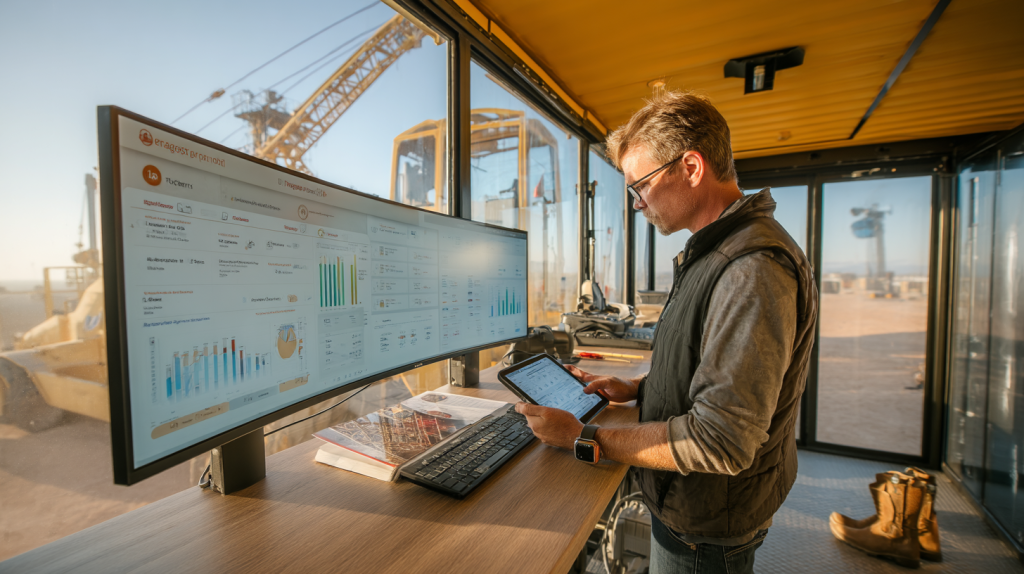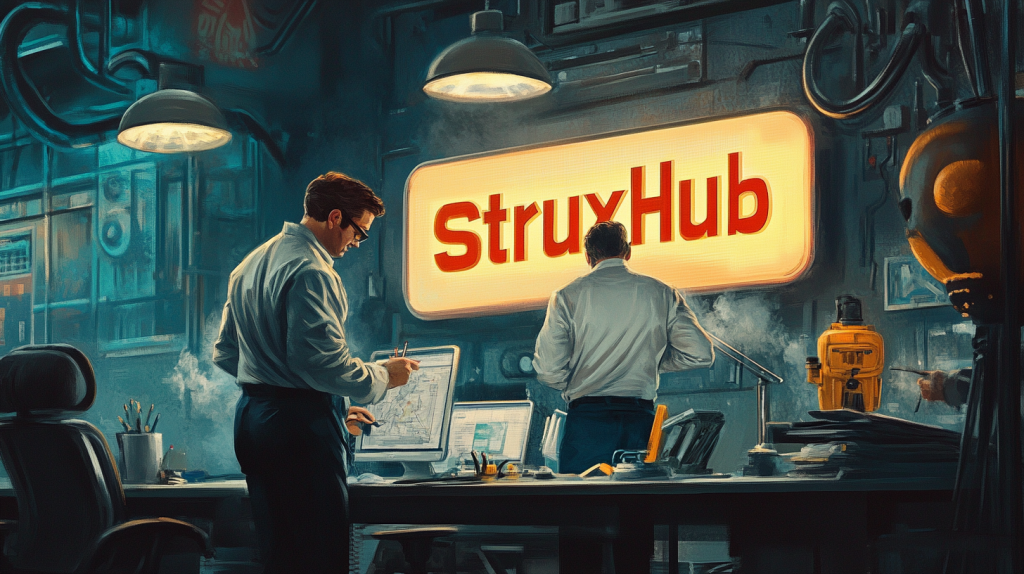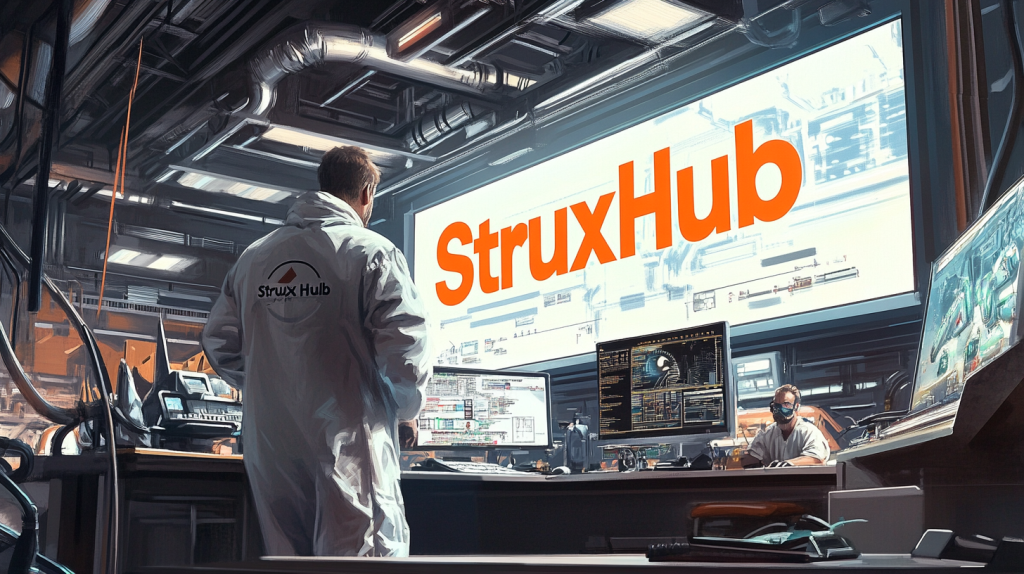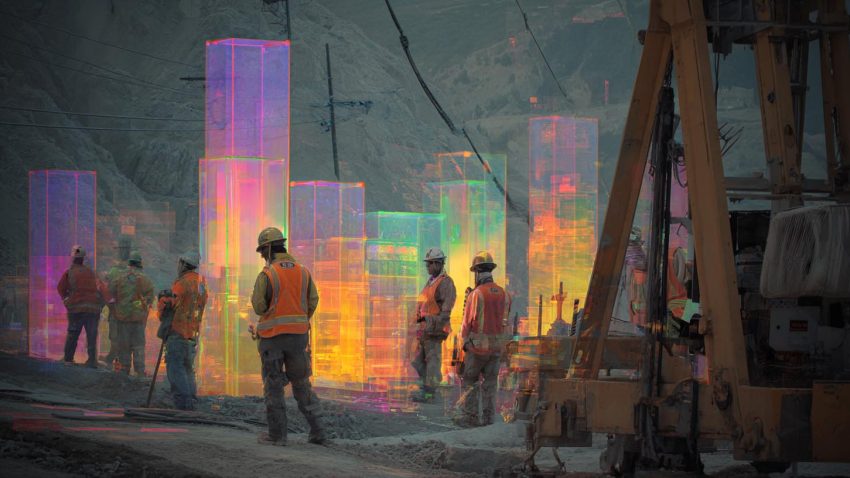What Is the Best Software for Construction Materials Management and Tracking
Table of Contents:

Managing construction materials is one of the most critical—and challenging—parts of any build. From procurement to delivery, staging, usage, and final installation, materials are constantly moving. Without the right system to manage and track them, delays, waste, and miscommunication quickly take over. That’s why general contractors and superintendents are turning to specialized software to streamline material workflows and bring control to jobsite logistics.
The best materials management software does more than track inventory. It helps your team know what’s been ordered, what’s in stock, what’s arriving, and how it aligns with the construction schedule. It connects the dots between procurement, field teams, and delivery vendors, ensuring nothing falls through the cracks—especially when deadlines are tight and margins are thin.
In this article, we’ll explore the core features of leading construction materials management software, how it supports jobsite efficiency, and what to look for when selecting a platform for your projects.
What Should Materials Management Software Do for Your Construction Team?
Materials management software should help your team stay organized, informed, and efficient at every stage of the materials lifecycle. That includes inventory tracking, delivery status, usage reporting, and documentation—all in one centralized system. The platform should be accessible to both office staff and field teams, enabling real-time communication and minimizing delays caused by missing or incorrect materials.
At a basic level, the software should allow you to receive materials, track their movement, and log usage. More advanced systems go further, integrating with procurement tools, tagging materials by task or area, and providing mobile-friendly dashboards for on-site teams. The goal is to replace spreadsheets, phone calls, and guesswork with real-time visibility and smart workflows.
For construction professionals working on complex jobsites, materials software becomes the operational backbone—keeping schedules moving, costs in check, and teams aligned.
Top Benefits
- Streamlined delivery and inventory workflows
View what’s coming, what’s on-site, and what’s running low—without toggling between tools. - Better collaboration between office and field
Share updates, confirm deliveries, and assign tasks based on real-time material status. - Reduced rework and waste
With the right materials, in the right place, at the right time, your team stays productive and accurate.
Best Practices
- Select tools built for construction—not general warehouse tracking
Look for platforms that understand jobsite workflows, field logistics, and project phase alignment. - Standardize how your team logs and verifies deliveries
Use templates and training to create consistency across crews and projects. - Make materials management part of your daily huddles
Regular updates ensure everyone knows what’s needed, what’s missing, and what’s next.
When done right, materials tracking isn’t just a logistics tool—it’s a driver of smoother execution and better-built outcomes.
How Does Materials Tracking Improve Daily Field Operations?
Materials issues are one of the top causes of jobsite delays. When deliveries are late, incomplete, or staged incorrectly, crews are left idle and schedules slip. Materials tracking software solves this by putting real-time data in the hands of superintendents, foremen, and PMs—so they can act fast and stay in control.
Instead of calling the office or flipping through delivery slips, field teams can check their dashboard to see what’s arriving today, what’s been received, and what’s approved for use. They can verify items, take photos, flag issues, and close the loop without waiting on back-and-forth communication.
This improves daily execution across the board. Trades aren’t waiting on materials, supers can sequence tasks more accurately, and PMs can identify risks before they turn into schedule problems. In high-volume environments, these daily efficiencies add up to major gains.
Top Benefits
- Less downtime for crews and equipment
When materials are tracked and confirmed, work stays in motion and costs stay down. - Faster resolution of delivery issues
Field teams can document problems instantly, speeding up replacement orders and vendor follow-ups. - More accurate progress tracking
Linking materials to tasks helps measure real installation—not just planned timelines.
Best Practices
- Use mobile tools for delivery confirmation and status updates
Make it easy for field teams to log updates on the go—without relying on paperwork or spreadsheets. - Tie material availability to scheduled tasks
Align logistics with your schedule so crews only start work when materials are ready. - Add materials review to your morning check-ins
Make sure every crew knows what’s available and what they should expect that day.
When field operations and materials status are in sync, your project runs faster, smoother, and with fewer surprises.

What Features Should You Look for in the Best Construction Materials Software?
Not all materials software is created equal. While basic systems track stock levels or delivery status, the best tools go further—helping your team manage complexity, reduce risk, and improve project outcomes. Knowing which features matter most can help you choose a platform that fits your project scale, team size, and construction workflow.
Look for systems that offer multi-project support, mobile access, and the ability to track materials by phase, trade, or location. Barcode or QR code scanning helps with fast logging, while integration with scheduling and procurement tools improves coordination across departments.
Automated alerts for delayed shipments, low stock, or missing verifications are also important—especially on fast-paced jobs. These notifications help your team take proactive action instead of reacting to problems after they’ve already impacted progress.
Finally, documentation is key. Platforms that allow attachments (like submittals, COIs, MSDS, or photos) help you close out faster, respond to inspections, and manage warranties with ease.
Top Benefits
- Holistic control of materials across all job phases
From order to install, track materials as they move, get used, or are reassigned between jobs. - Proactive issue resolution
Alerts and updates help you identify risks before they stall your schedule. - Stronger closeout and compliance support
With digital logs and documentation, you’re always ready for handoffs and audits.
Best Practices
- Choose platforms that integrate with your core tools
Materials tracking works best when it’s part of your overall construction tech stack. - Involve both office and field users in your decision
Make sure the platform fits everyone’s workflow—not just the procurement team’s. - Pilot the system on a single project first
Use a smaller rollout to fine-tune training, process alignment, and adoption.
The best materials management tools aren’t just digital trackers—they’re operational accelerators for your entire build process.
How Does Software Help Manage Materials Across Multiple Projects?
For GCs and operations teams managing several job sites at once, material coordination becomes exponentially harder. Materials may be ordered for one project, stored offsite, borrowed for another job, or delayed in transit—without a clear system, things fall through the cracks. The best materials management software brings all your projects into one centralized dashboard so you can stay ahead of logistics.
With multi-project tracking, you can view material quantities by location, assign items to specific jobs, and track delivery status across all active sites. This helps prevent double ordering, overstocking, or idle stock that could have been repurposed elsewhere. It also enables smarter procurement: instead of placing several smaller orders, you can consolidate demand and negotiate better pricing with vendors.
This level of coordination is especially valuable for companies scaling operations, expanding regionally, or managing fast-paced rollouts. You can prioritize shipments based on project urgency, adjust allocations, and catch delays before they disrupt your critical path.
Top Benefits
- Centralized control over all material inventory and deliveries
Monitor stock across every jobsite, warehouse, or yard in one real-time view. - More efficient use of surplus materials
Identify and redeploy unused stock before placing new orders—saving time and money. - Improved project-to-project consistency
Standardize tracking, documentation, and workflows across your entire operation.
Best Practices
- Tag all materials by jobsite and phase during intake
Prevent misallocations by knowing exactly where each item belongs and when it’s needed. - Set transfer workflows between projects
Allow PMs to request or approve stock moves so materials get used strategically. - Use dashboards to highlight project-specific risks
Spot low-stock alerts, overdue deliveries, or consumption trends across sites.
When materials data spans all your active jobs, you can operate with confidence, speed, and strategic clarity.

What Compliance and Documentation Support Should the Best Platforms Offer?
Construction projects are subject to a wide range of compliance requirements—from local code specs to insurance documentation, environmental certifications, and closeout requirements. The best materials management software supports these demands by automatically collecting, storing, and organizing documentation tied to each material entry.
When a shipment arrives, the platform should allow field teams to attach photos, spec sheets, submittals, and certificates directly to that material’s digital record. This streamlines inspection prep, simplifies warranty management, and gives you peace of mind during handoffs or audits.
For teams working on government or healthcare projects, having MSDS, LEED documentation, or third-party certifications easily accessible is a must. And even on standard commercial builds, it reduces back-and-forth with owners and cuts time spent hunting for paperwork during closeout.
Platforms that make documentation part of the daily workflow—rather than a final step—help your teams stay compliant without extra admin overhead.
Top Benefits
- Easier access to material-specific compliance records
Pull submittals, approvals, and certifications instantly—no binder diving needed. - Stronger inspection and audit readiness
Be prepared to show what was delivered, approved, and installed—on demand. - Smoother project closeout and warranty tracking
Keep all material records in one place so owners and facility teams get full transparency.
Best Practices
- Standardize document uploads at delivery
Train crews to attach spec sheets and certs as soon as materials hit the site. - Link materials data to compliance checklists
Help QA/QC teams verify that everything used on-site matches approved documentation. - Use document search features during handoff
Export or share folders by phase, trade, or material category for client-facing records.
Strong documentation turns your materials tracking system into a compliance engine—saving you time and reducing risk.
How Does This Software Improve Communication Between Office and Field Teams?
Communication gaps between the office and field are a top cause of delays in materials management. Procurement may place the order, but the field doesn’t know when it’s arriving. A delivery may show up damaged, but the office isn’t notified in time to resolve it. Materials management software bridges this gap by making data visible and actionable to all teams—wherever they are.
Field users can see what’s on order, log delivery conditions, and track what’s in use—without needing to send emails or chase down spreadsheets. Office users can see what’s been verified, flagged, or delayed—and respond in real time.
This two-way visibility reduces misunderstandings, speeds up decisions, and builds trust. Instead of disconnected workflows, your materials pipeline becomes a live, transparent system that supports accountability and coordination.
Top Benefits
- Real-time updates across departments
Everyone—from supers to procurement—sees the same material status, delivery logs, and stock levels. - Faster issue resolution from the field
When something goes wrong, the office knows immediately and can take corrective action. - Reduced dependency on calls, emails, or status meetings
With shared dashboards and alerts, communication happens automatically in context.
Best Practices
- Provide role-based access for field and office users
Tailor the interface so each team sees what’s relevant to their responsibilities. - Use mobile tools to report and resolve material issues
Let field teams upload photos, notes, or requests on the spot—no lag, no paperwork. - Incorporate materials status into project coordination meetings
Review key updates together so scheduling, labor, and materials stay aligned.
Strong communication turns your materials system into a true collaboration tool—not just a reporting app.
How StruxHub Helps Teams Execute on Materials Plans in the Field
StruxHub enhances your materials tracking by embedding it into your jobsite workflow—so your team doesn’t just know what’s coming, they know what to do with it. While most materials systems live in the back office, StruxHub brings real-time visibility and task coordination directly to the field, where action happens.
Once a delivery is confirmed in your materials platform, StruxHub allows teams to assign tasks to verify, stage, or install those materials. You can tag deliveries as “pending install,” assign a foreman to confirm quantity and condition, or create follow-up tasks for when specific trades need to be notified.
For example, if HVAC equipment arrives ahead of install, your team can log it in StruxHub, tag the appropriate crew lead, and attach specs or photos to reduce confusion. If there’s an issue, the crew can flag it immediately and notify procurement in real time.
This level of coordination helps your field and office teams work from the same playbook. Materials don’t sit idle or go untracked—everything has a next step, and it’s visible to everyone who needs to know.
Top Benefits
- Field-level coordination tied to materials status
Assign actions based on what’s delivered, what’s missing, or what’s ready for install. - Live task visibility for delivery-related activities
Stay informed about material blockers, verification steps, or prep work required. - Faster communication and resolution across teams
Instead of emailing updates, your field team logs it once—and everyone is notified instantly.
Best Practices
- Create task templates for common material workflows
Standardize steps like delivery checks, staging, or installation prep across your team. - Use photo uploads and tagging to log conditions and context
Reduce confusion and speed up resolution by showing—not just telling. - Make material coordination part of your daily site reviews
Keep material-based tasks on your team’s radar so nothing slips through the cracks.
With StruxHub, your materials plan becomes more than a list—it becomes part of your team’s day-to-day execution.
Related Articles:
Best Guide to Construction Management Software
The Best Guide to Delivery Management Systems (DMS) for Commercial Construction
Best Construction Materials Management Software for Tracking Inventory and Orders
Top Construction Materials Tracking Software for Inventory, Deliveries, and Jobsite Control
Best Construction Procurement Management Software for General Contractors and Superintendents

StruxHub
Experience the power of StruxHub today and witness firsthand how it can revolutionize your construction operations.
FAQ
What is the difference between materials tracking and full materials management?
Materials tracking is a subset of materials management—focused specifically on monitoring where materials are, how much is available, and when they’re arriving. It answers questions like “Do we have enough?” and “Has it been delivered?” It’s all about visibility and movement, often updated by field teams, warehouse staff, or logistics coordinators.
Materials management, on the other hand, includes a broader set of responsibilities. It covers procurement, delivery, storage, usage, documentation, forecasting, and coordination with project schedules and budgets. It asks and answers more strategic questions: “What materials do we need next month?” “Can we transfer surplus stock from another job?” “What vendor gives us the best value?” “Are we in compliance with submittal and spec requirements?”
Good materials tracking ensures that your field teams are informed and ready. Good materials management ensures that your entire operation is efficient, cost-effective, and compliant from end to end.
Software that offers both capabilities creates a full-circle solution. It connects procurement teams with field crews, PMs with superintendents, and cost codes with real-time material usage. For example, a manager might use the system to generate a PO and assign a cost code. The materials team tracks the delivery. Field staff confirms condition and quantity. Finance sees how it ties into the budget.
Tracking without management leaves teams guessing. Management without tracking leaves gaps between planning and execution. The best platforms combine both—giving your team the tools to plan ahead, execute accurately, and learn from past projects.
In short: materials tracking is the “what’s happening now,” while materials management is the “what’s next, what’s missing, and how do we optimize it?” Construction teams need both to stay ahead.
How does real-time materials visibility impact project timelines?
Real-time visibility into materials is one of the most underrated drivers of construction project performance. Delays caused by missing or miscommunicated materials can lead to stalled crews, missed inspections, and costly rescheduling. With real-time tracking, those surprises disappear—or at least get resolved before they spiral into major issues.
Let’s say your crew is scheduled to begin roofing next Monday. With real-time materials visibility, the superintendent can check whether the roofing materials are already on-site, in transit, or delayed. If they haven’t arrived, the PM can step in to expedite or adjust the schedule accordingly—before workers are standing around waiting.
It also helps prevent double ordering or underordering. When field and office teams work from the same inventory view, they avoid unnecessary purchases, cut waste, and make better use of shared materials across projects.
Materials visibility also ties directly into jobsite control. When superintendents can see what’s on hand, they can assign tasks with confidence. If deliveries are running behind, they can pivot the day’s plan without disrupting overall progress. This agility is especially important in complex, multi-trade environments where even one delayed item can stall the entire sequence.
On the administrative side, real-time visibility improves communication with vendors, clients, and inspectors. If someone asks, “When did that steel arrive?” or “Do we have proof of that material’s compliance?” you can pull it up instantly—no digging through folders or calling three people.
In the big picture, better visibility means fewer surprises, faster responses, and more reliable schedules. Over the course of a 3-month, 12-month, or 24-month build, these small daily improvements compound into serious time savings.
What types of teams benefit most from materials management software?
While nearly every construction team can benefit from materials management software, it delivers the highest value to teams that manage large-scale projects, multiple jobsites, complex logistics, or strict compliance requirements. These are the teams where material delays, miscommunication, or missing documentation cause significant ripple effects across trades, schedules, and budgets.
General contractors managing several active projects at once benefit enormously. These teams often juggle hundreds of deliveries, dozens of vendors, and shifting labor resources. Materials software helps them centralize visibility, reduce reordering errors, and respond to field needs without losing control.
Self-performing contractors—such as electrical, mechanical, or framing teams—also see a strong ROI. Because they manage both labor and materials, having visibility into what’s on-site versus what’s still en route can dramatically improve task sequencing and productivity.
Procurement teams and purchasing managers benefit by gaining a single source of truth for orders, delivery confirmations, and vendor performance history. This helps reduce overbuying, cut down on invoice disputes, and improve forecasting for future builds.
Field teams like superintendents and foremen use these tools to confirm deliveries, document condition issues, and plan their daily workflows. By tying material status to scheduled tasks, they gain confidence and flexibility—even when projects change rapidly.
Finally, project executives and finance teams use materials software for budget tracking, reporting, and post-project analysis. Accurate logs show where money was spent, what went to waste, and how performance can improve next time.
Whether your company is scaling operations, managing repeatable buildouts, or just looking to clean up jobsite chaos, materials management software brings structure, savings, and smarter execution.
What challenges should I watch out for when implementing materials software?
Like any new technology, rolling out materials management software comes with its own set of challenges—but the good news is, most of them can be solved with upfront planning, training, and stakeholder alignment.
The first challenge is adoption—especially from the field. Superintendents, foremen, and laborers are used to fast, verbal workflows. If the software feels clunky, overly complex, or not mobile-friendly, they won’t use it. That’s why it’s critical to choose a platform with intuitive mobile features and minimal data entry. Involve your field teams during pilot testing and training to get their feedback early.
Another common challenge is poor process alignment. If your team doesn’t have a clear, consistent method for receiving, logging, and tracking materials, the software won’t magically fix it. You need to document your current workflows, identify gaps, and standardize key steps—such as how deliveries are confirmed, how items are staged, and how issues are flagged.
Data quality can also become a problem. Inaccurate quantities, duplicate entries, or failure to close the loop on received items can erode trust in the system. To avoid this, create clear ownership: who enters data, who verifies it, and who audits it weekly.
Integration is another hurdle. If your materials platform doesn’t sync with your schedule, procurement, or accounting tools, you’ll end up with siloed data. Look for platforms that offer APIs or native integrations—and work with your IT team to set them up correctly.
Finally, avoid going too big too fast. Start with one project, one region, or one division. Use that rollout to fine-tune processes and build internal champions before expanding company-wide.
When implemented thoughtfully, materials software pays for itself. But it’s not a plug-and-play solution—you need process, people, and patience to make it stick.
How does StruxHub enhance your existing materials workflow?
StruxHub enhances your materials workflow by acting as the operational layer that connects your inventory data to actual jobsite execution. It doesn’t replace your procurement or inventory system—it makes sure your team uses that information in real time to keep work moving.
Imagine this: Your materials tracking software logs that drywall has been delivered and staged. StruxHub then triggers a task to notify the crew, assign installation, and log progress. If something goes wrong—damaged pallets, missing fasteners—the field can document it immediately inside the platform. The office sees the update in real time and can respond without waiting for a call or a photo in a text thread.
StruxHub is especially valuable for superintendents and project managers who need to coordinate trades, deliveries, and dependencies in a fluid environment. Instead of chasing status updates or walking the site to check pallets, they open StruxHub and see everything in one place—what’s arrived, what’s been installed, and what’s still waiting.
It also improves accountability. When tasks are tied to material readiness, your team knows exactly when they’re expected to act. This cuts down on idle time, reduces miscommunication, and keeps everyone aligned with the plan.
You can also link materials-related tasks to punch list items, inspections, and daily reports. This makes materials visibility part of your team’s regular workflow—not a separate system that’s easy to forget.
In short, StruxHub doesn’t just show you what’s happening—it helps your team act on it faster. That’s how projects stay on track, crews stay productive, and materials actually get used the way they were intended.




